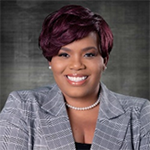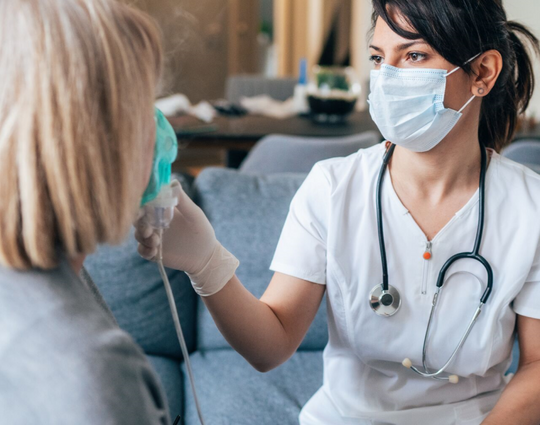
 As Black Americans continue to face the COVID-19 pandemic, it is vital to bring awareness of Black America’s struggle against concentrated poverty, condensed housing, and lack of access to essential resources. Current data continues to illustrate the disproportionate burden of COVID-19 related illness and death among racial and ethnic minority groups in underserved communities.
As Black Americans continue to face the COVID-19 pandemic, it is vital to bring awareness of Black America’s struggle against concentrated poverty, condensed housing, and lack of access to essential resources. Current data continues to illustrate the disproportionate burden of COVID-19 related illness and death among racial and ethnic minority groups in underserved communities.
With members of the Black community dying 3.7 times more than whites, COVID-19 has demonstrated and strengthened the notion that as a nation, we have become desensitized in more ways than one to the death of Black Americans. It is past time to advocate for and advance vital reforms to dismantle systemic racism that maintains our current state of affairs.
Where we live, learn, work and play affects our health, and over time, the conditions we experience lead to varying levels of health risks, needs, and outcomes. A constant backdrop of increased environmental risks and unmet social needs with long plagued communities of color has exacerbated health inequities for the most vulnerable individuals in these populations. Health disparities and health equity are inextricably linked; therefore, achieving health equity is essential to ensure better health, healthcare, and health outcomes for the Black community. COVID-19 continues to expose critical mistakes made on behalf of the government and medical community in not prioritizing and addressing these challenging health disparities in the Black population. As a result, chaos and confusion have continued to emerge, and the economic and health state of our underserved communities of color has been endangered.
We are aware that Black Americans have higher rates of chronic conditions and that COVID-19 exposes their increased health vulnerability. However, this cannot be where the conversation ends. To advocate for and protect those with increased health vulnerabilities, we must have broader discussions around the complex disparity ecosystem and look for a deeper why. We must begin to consider if weathering, advanced aging, and bodily wear due to constantly responding to external stressors such as racial discrimination is a significant cause of the Black race’s difficulty in fighting this disease.
The weathering hypothesis dictates that the sustained high effort coping with environmental, psychosocial, and material stressors over the years and decades and across generations that Black people must engage and endure in a racist system leads to cellular damage and accelerated biological aging. This results in higher prevalence and earlier onset of chronic diseases and increases vulnerability to an infectious disease’s worst impacts. Think about it; Black Americans have had to make hard choices of whether to eat or buy their medications, whether to pay rent or manage their health conditions. They live in neighborhoods lacking access to healthy food but flooded with fast-food chains. These challenging conditions, compounded with the erosion of psychological and cardiovascular health from racially charged stressors, consistently contribute to health disparities in the Black community. Seeking a deeper why and investigating the health effects of weathering can help us uncover impactful factors that exist beyond a person’s control and cause them to be extremely susceptible to an infectious disease, such as COVID-19.
The Centers for Disease Control and Prevention (CDC) guidelines of social distancing and being quarantined, although necessary to manage the spread of COVID-19, proved detrimental to the underserved communities. These guidelines left their neighborhoods more susceptible to higher infection rates and death for Black people in residentially segregated areas. As many medical facilities, grocery stores, and retail stores closed when most of the United States went on lockdown, Black people faced a greater lack of access to the essential provisions needed to meet CDC guidelines. Hand sanitizer, disinfecting wipes, and masks were challenging to find due to huge, unprecedented demand, leaving the most at-risk without the proper protective equipment to fight COVID-19 and save their lives.
Advocacy in Color
People of color are accustomed to fighting for equality, and they understand some policies do not work in their favor. Identifying and tackling discriminatory practices have the potential to increase and enhance efforts to gain participation in decision-making roles that can contribute effectively to litigation, policy-making, and other protections, including better benefits for Black people and other people of color.
The long-term effects of neglect and lack of funding for proper healthcare in communities of color is a continuous cycle that has not gotten better with time. Disinvestment and neglect of underserved communities have unmasked the increased systemic mechanisms that have put Black and minority communities at a higher risk of getting sick and dying from COVID-19. Our country’s lack of national response and implementation of a unified plan at the onset of the pandemic has burdened communities of color and our healthcare system and has further solidified that structural racism is as pertinent today as it was yesterday and will continue to be tomorrow if not stopped.
Even though we are in the COVID-19 pandemic together, our access, experiences, and outcomes are different. Our concerted efforts, which are strengthened by diversity, are needed to ensure this pandemic does not widen the gaps between health haves and have nots. COVID-19 has caused widespread uncertainties and inconveniences in our lives, and it is not going away anytime soon. Advocating for and practicing diversity, inclusion, and respecting our differences is our strength.
In these differences lie our ability to create sustainable solutions to address health disparities and health equity for Blacks and minority communities. We need to see diversity as something to celebrate and not fear. We need to encourage forward-thinking and promote an environment where change and problem-solving are met with collaboration and innovation. Why do we fail to protect diversity? Instead, we should embrace it and create an approach and methodology which builds a framework for translating values into organizational actions. America would have an unparalleled advantage, given our increasing diversity if we approached our differences in the principles of human rights, inclusion, the development of entrepreneurship, community empowerment, and wide-ranging evidence-based practices.
How Do We Fix This?
Blacks and other vulnerable populations should always have access to quality healthcare and providers. However, many voices have not been fully heard or understood. Our country’s efforts to stop the spread of COVID-19 reflect the work that we need to do to ensure Black people receive proper care daily and the knowledge and tools they need to prevent and stop the spread of COVID-19 in their families and communities. We must work together to save ourselves and each other.
Underfunding of healthcare programs that provide essential resources is one issue, but the other side of the problem is that our nation lacks the diversity in leadership and medical personnel that can assuredly make a difference in healthcare reform. The variety of medical leadership and staff can bring helpful personal and realistic insights concerning the different barriers and challenges contributing to healthcare inequalities. Without diversity, unconscious biases can impact healthcare delivery and determine whether a patient gets proper testing and treatment. Without diversity, Black people cannot be confident that their voices at the table are genuinely heard or understood. No one can tell the story or speak on behalf of Black people and people of color better than they can. If the persistent health disparities in our communities are to be resolved, Black physician leadership will be necessary. Without justice and equity in healthcare, the civil rights leaders’ dreams will never become a reality for Black Americans.
Black lives are part of a public health crisis. There has never been a time when the urgency of the moment is more significant than now. The front and center of our nation’s healthcare issues are that Black and minority groups are dying at a higher rate than any other culture or race. As an individual, I am strong, but as a collective force, we are mighty.
I am challenging the changemakers to advocate for and develop strategies to address and implement changes that remove health equity barriers with hopes of spawning an appetite for evolution and growth. The time is now for companies, communities, and organizations to lead the change and pressure our healthcare and government leaders to accelerate the need to address evident, but unconscionable health disparities and poor outcomes.
The views and opinions expressed in this content or by commenters are those of the author and do not necessarily reflect the official policy or position of HIMSS or its affiliates.
Global Health Equity Network
Help advance the cause of health and wellness for everyone, everywhere by advocating for underserved groups in health information and technology around the globe, and collaborate to find real-world solutions to challenges and roadblocks



